Project Description
This project works like a voice-changing speaker: when speaking to the microphone, their voice will change. There are three sound modes: baby voice, the voice of minions, and the voice of transformers. Users can adjust the switch under the microphone to pick the voice tune. There is a voice-changing module inside the middle box of the project, and I use a little Arduino breadboard to connect the module with a speaker, a microphone, and a button by using wires. When pushing the button while speaking to the microphone, the changed sound will come from the front speakers.
I was inspired by a movie called Minion. In the movie, there is a plot in which when little minions speak through a speaker, their voices change at the same time. I found it very interesting and combined this idea with my project. Human beings are getting used to the voices they use every day. This project provides people a chance to change their voice tune. By using this project, users can call others names by different voices, having fun while making life more interesting.
Perspective and Context
In the first week, we learned about many kinds of perceptions and had a look at how artists incorporated different perceptions into their artworks. In my project, I choose to modify sound perception and transform one’s voice into several different tunes. The Chameleon Tune project is not just a simple voice-changing module, it is both aesthetic and user-friendly. As Irwin mentioned in the readings: “ ‘Art’ is a posture of aesthetic inquiry, the punctual/conceptual recognition, construction and ordering of individual reality”.
This project is combined in the shape of a loudspeaker, with a microphone exposed on the back, a switch under the microphone, a button attached on the left side, an LED from about wrapped by a colorful cover, a speaker in the front, and a handle attached on the bottom of this project. Users can easily hold the handle and push the button while speaking to the microphone. All the wires, the module, and the batteries are hidden inside the middlebox. Chameleon Tune is aesthetic because of its simplicity and usefulness, it is a great fit of “art”.
The circuit inside the middle looks like this:
Development & Technical Implementation
Among all kinds of perceptions, I was extremely interested in voice. At first, I searched on Google for how to change people’s voices and found that inhaling helium can make people’s voices sharper. However, it is hard to use this idea because it is not only hard to purchase helium but also even if I got the helium gas, it is dangerous for all of us to inhale. In addition, helium can make voice sharp only when it is inside people’s throats. It is difficult to put this idea into practice. Therefore, I turned to find other alternatives. I remember that I watched a movie called Minion when I was in elementary school. In this movie, little minions use a loudspeaker to change their voices and have fun with others. Inspired by the movie, making my project as a shape loudspeaker came to my mind.
Because of the time and resource limitations, I chose to use cardboard, the most accessible material in the IMA studio as the main part of my project. By using tape, a hot glue gun, and essential tools, I made a cardboard loudspeaker.
I also bought a voice-changing module online, borrowing a small breadboard, a push-button, and some wires in the studio, connecting them as a controllable device and combining the device with the cardboard-built loudspeaker.
Hold the handle and push the button while speaking to the microphone, a changing sound will come out in front of the loudspeaker. At the same time, the LED light will shine and change colors. Users can also adjust the switch under the microphone to choose what sounds they want to change.
Presentation
During the presentation, one of my classmates tested my project after I explained how my project worked. She pushed the button, talked through the microphone, and then her voice came from the speaker was shaper than her original voice. She recognized that her voice was like a minion. She also tried adjusting the switch from the left to the middle, repeating the previous procedure, and then what we heard was the sound of the transformer, but people could hardly hear clearly what she said. Other classmates also played with my project, and from them, I received feedback.
People said my project was interesting and amusing, and they enjoyed playing it. All of the equipment functioned well. However, there were also several points that I could improve. The changing voice is clear when the switch is on the left or the right, but when it is in the middle, people cannot hear a clear changing voice. Besides, the changing voice was supposed to be larger, but it ended up with a low volume instead. After I checked the project, I found out that the speaker had dropped inside the middle box—that is why the changing voice was vague, like coming from inside the box. What’s more, it would be better if I could add a cover for the microphone, for when a tester speaks to the microphone, listeners can hear the tester’s original voice and the changing voice simultaneously. A cover can prevent the changing voice from disturbing the tester’s original voice.
Conclusion
After making my project while presenting it in class, I learned a lot. Firstly, I refreshed my memory about how to use the basic equipment because I have not touched these IMA equipment for a year and am somewhat unfamiliar with these things. Secondly, I learned that thinking comprehensively before making the project is very important. In the beginning, I finished connecting most components and combined the electronic parts with the cardboard. However, after I attached them, I figured out that I was not able to turn off the speaker. So I can only take the components out of the cardboard and rebuild the electronic parts to add a switch for it. Thirdly, I should consider more about the effect of this project. Without a cover, listeners can hear the speaker’s real voice and the changing voice at the same time. What’s more, I built the cardboard in the shape of the loudspeaker, aiming to amplify the volume. However, it ended up with the opposite effect: the volume of the speaker was constrained under the cardboard.
What I succeeded in was that I ensured the overall function of the project, none of the components were broken, and the cardboard outside was intact and solid. Also, the idea of building the project in the shape of a loudspeaker made it interesting and user-friendly. In the future, I have to think of ways to ensure the effect of my project, including making a concise plan beforehand, being careful when picking the materials, and seeking advice from others.
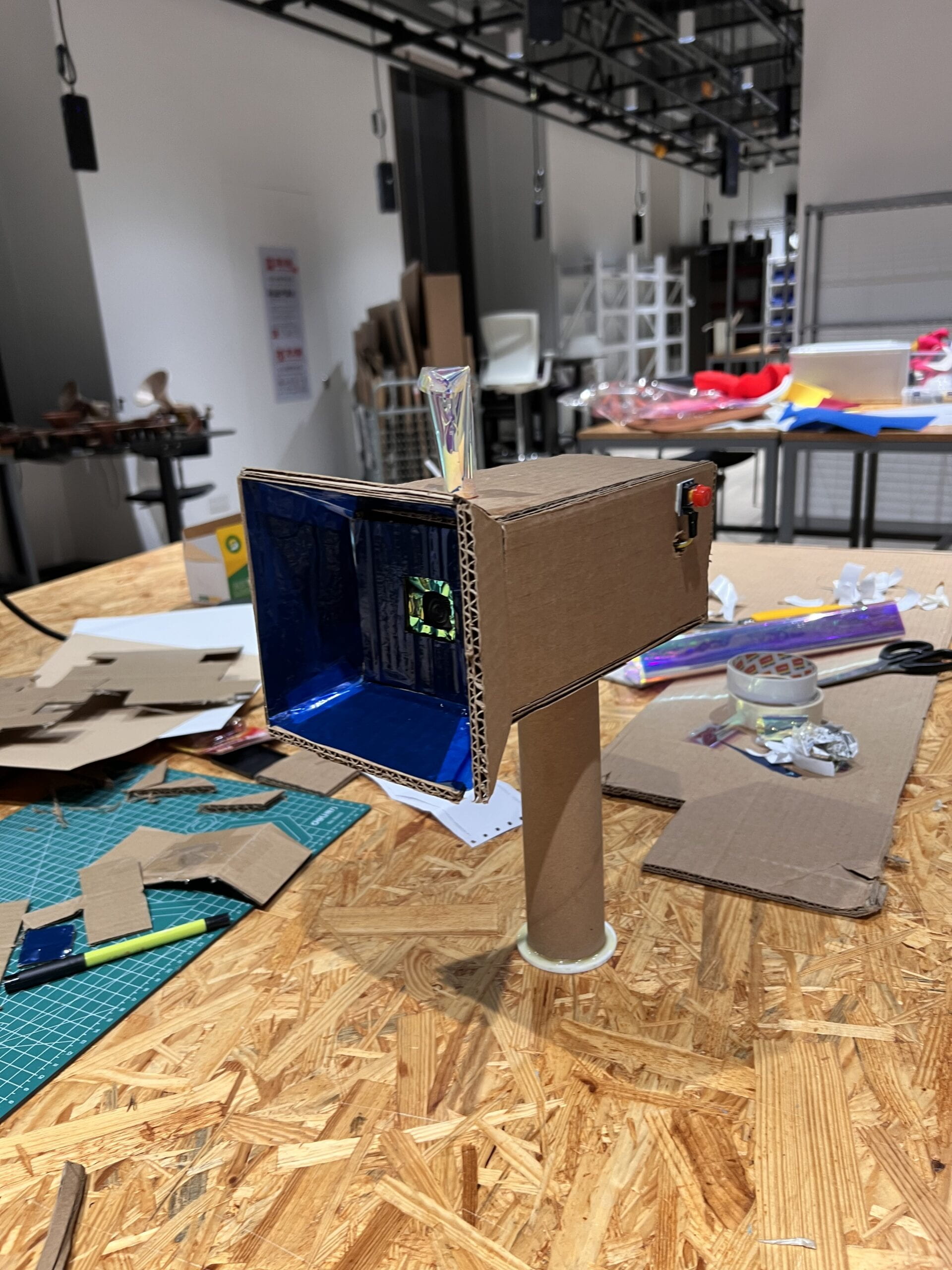
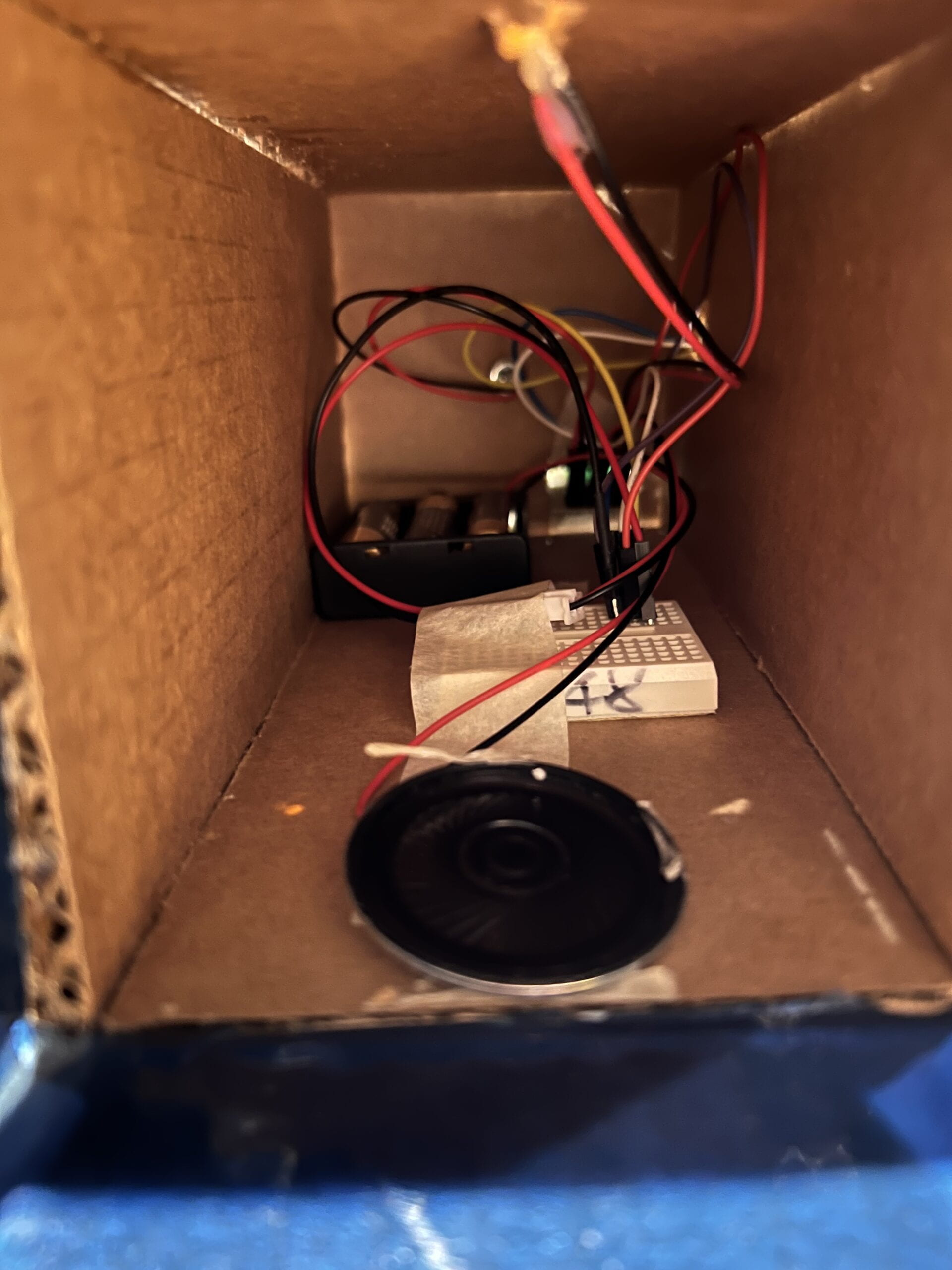

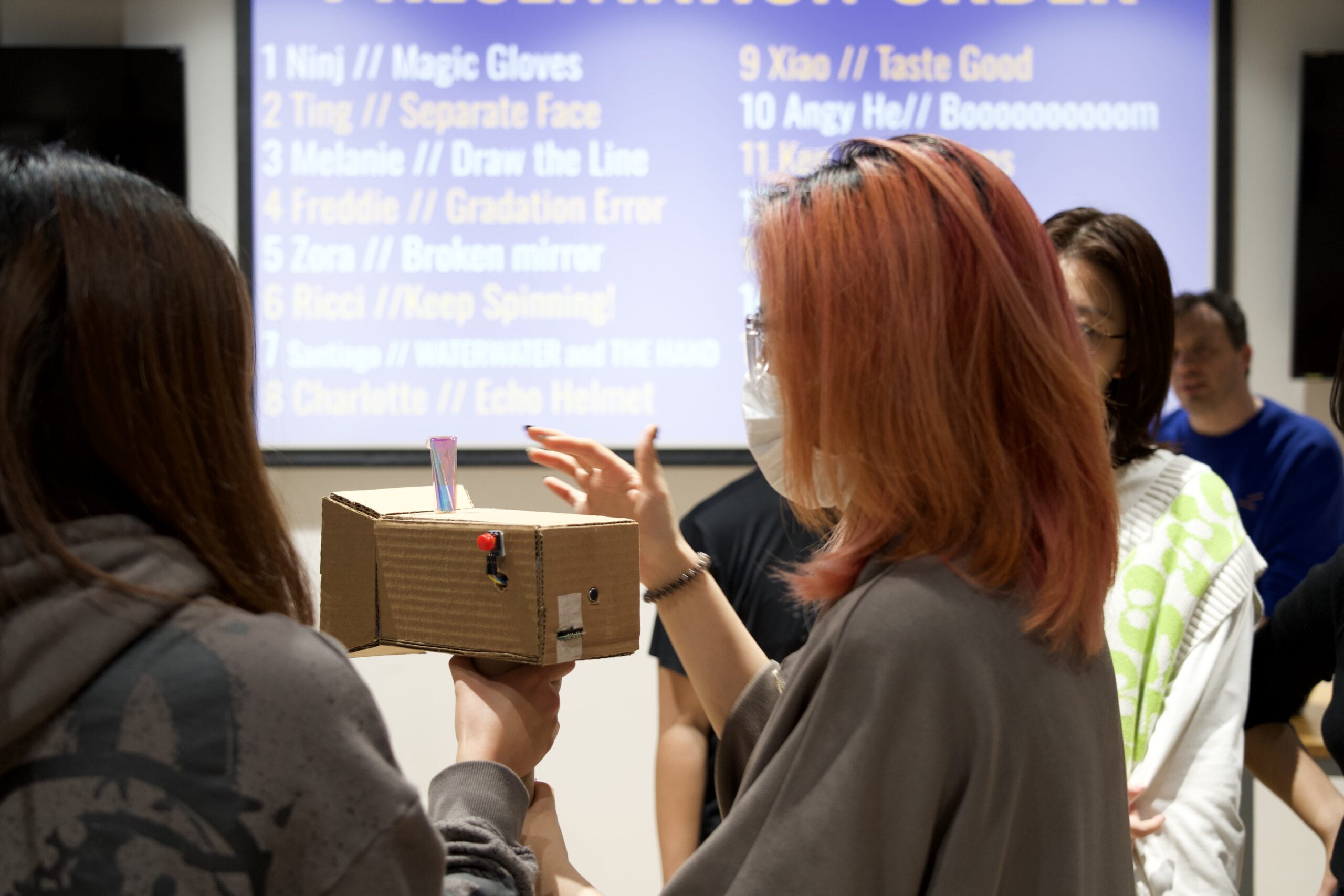
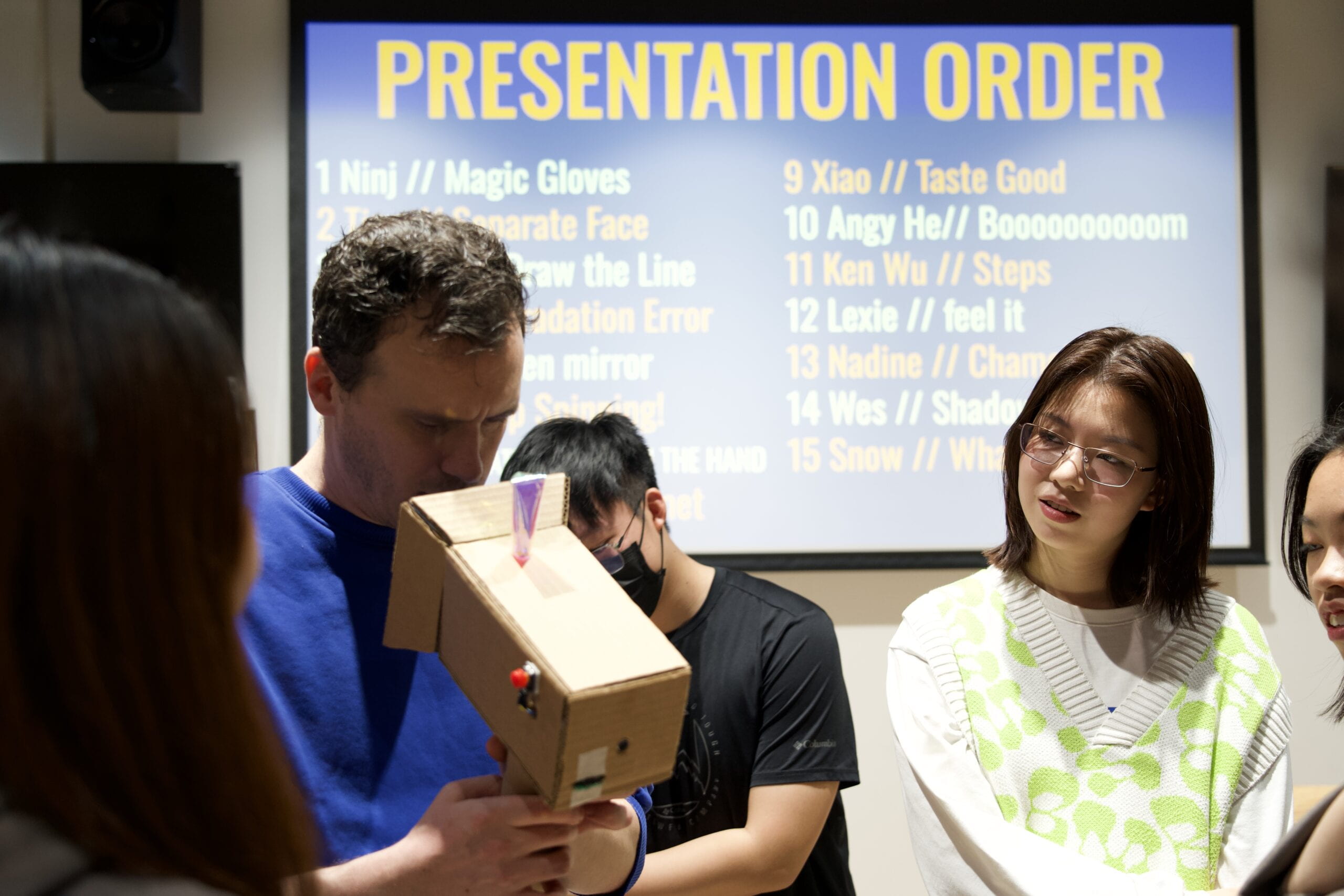
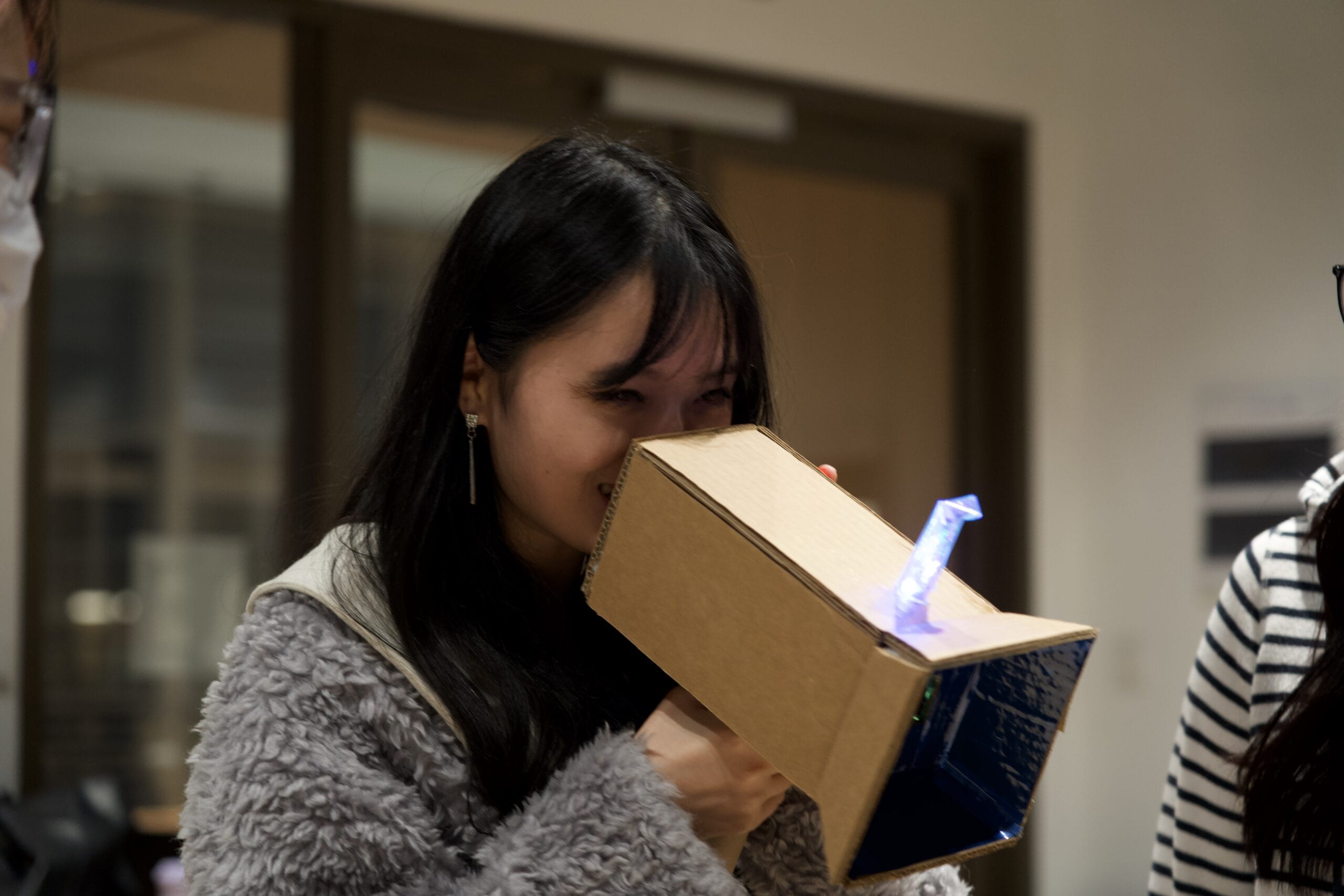
Leave a Reply